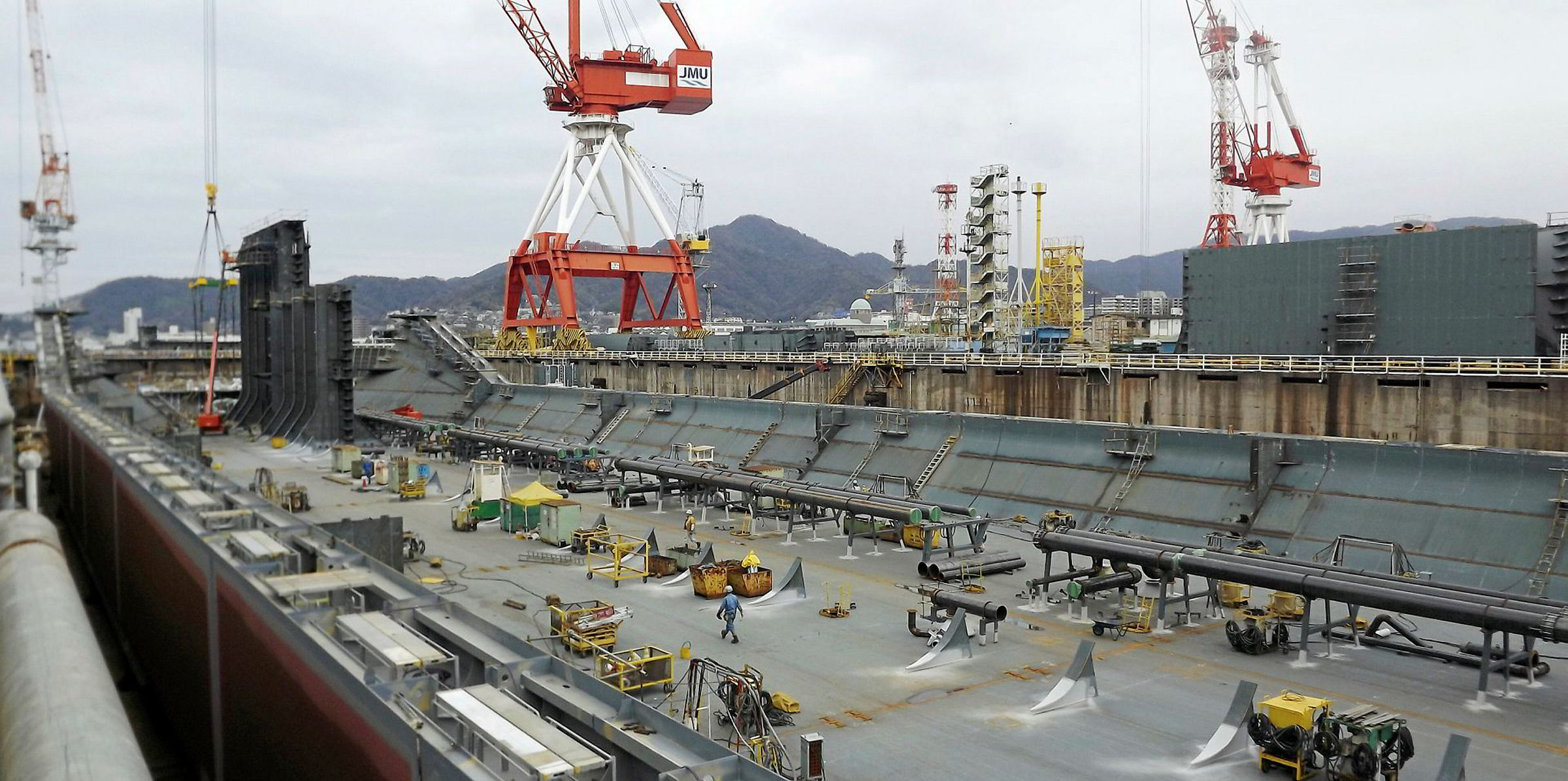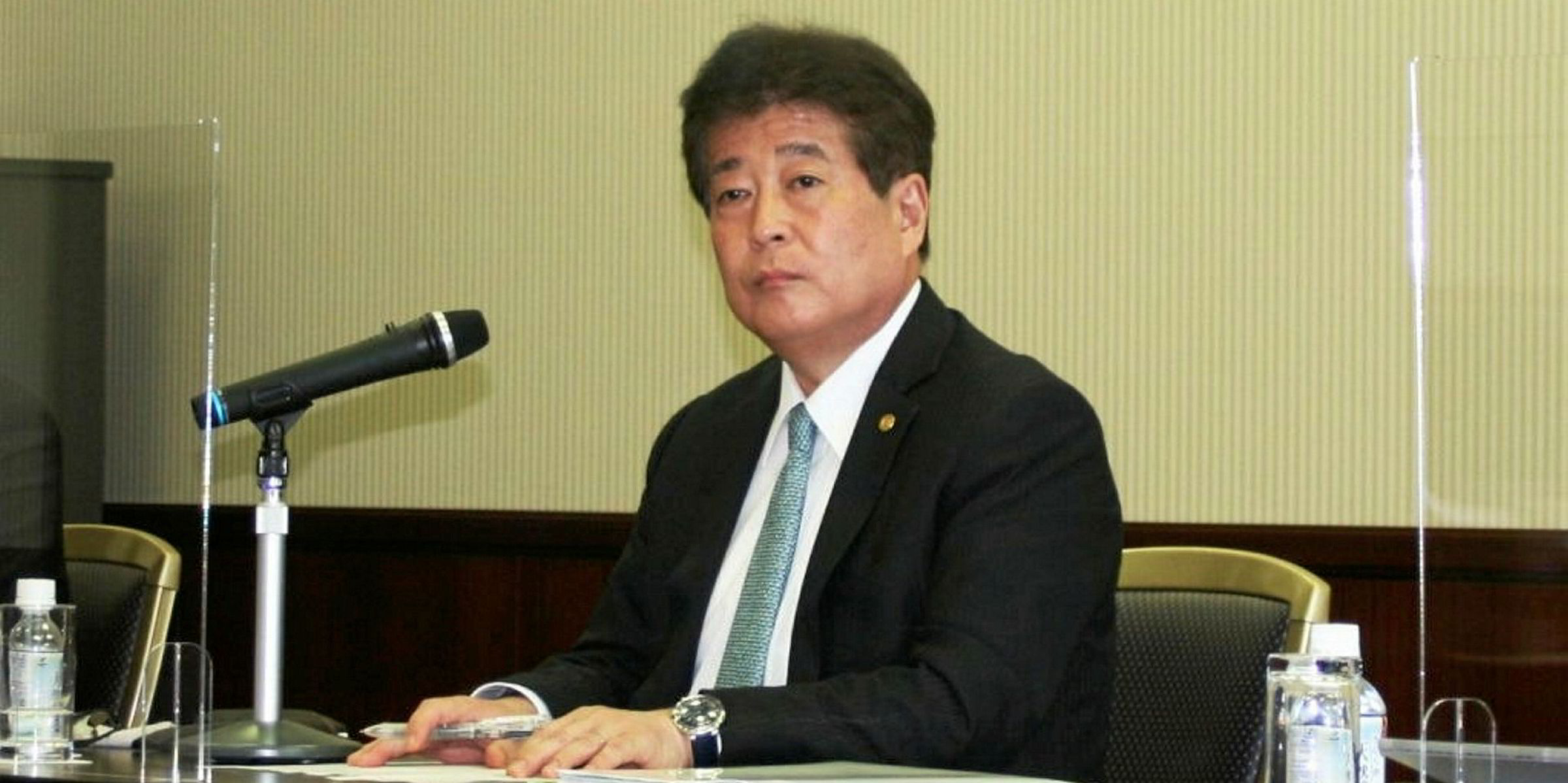Imabari Shipbuilding is about to record an important milestone in its long history. The privately owned group, established in 1901, will in November celebrate the opening of Nihon Shipyard, a joint venture with Japan Marine United (JMU).
The joint company will potentially create Japan’s largest shipbuilder and the third-largest in the world. Imabari will hold a 51% stake, while JMU has 49%.

This story is one of 30 profiles in a special edition of our TW+ magazine.
To celebrate TradeWinds’ 30th birthday, TW+ is not looking back, but forward, with a Thirty@30 focus on the important people and issues extending out to 2050.
TradeWinds reporters have profiled 30 personalities who have shown traits that we think mean they will influence the directions the shipping industry takes, maybe not quite as far forward as the next 30 years, but certainly over the next decade.
Read all the profiles when TW+ is published on 16 October.
Nihon Shipyard is being set up at a time when Japanese shipyards are struggling to stay afloat, due to low demand and severe price competition from South Korea and China.
Imabari’s president, Yukito Higaki, the great grandson of the shipyard’s founder, Tameji Higaki, hopes Nihon will promote the production of new ship designs and environmentally friendly and technically advanced vessels ahead of other shipbuilding groups.
Imabari, which has 11 shipyards under its wings, is developing LNG-, LPG- and ammonia-fuelled designs aimed at reducing carbon emissions.
It is building an LNG-fuelled car carrier at its Tadotsu Shipyard and has won approval in principle for a new 180,000-dwt LPG design capesize bulker. It is also part of a six-company consortium developing an ammonia-fuelled ship.
But the tough shipbuilding market is not the only challenge Higaki faces.
The graduate from Tokyo’s Keio University also needs to get the company back in the black after it recorded a deficit of ¥11.6bn ($111m) in the fiscal year ended March 2020.
Lower-priced vessels sliced ¥11bn off Imabari’s revenue to ¥380.6bn, but the yard set a record by delivering 97 vessels amounting to 5.25m gt in the year.
Imabari’s loss was a big setback for the domestic shipbuilding industry, as it is the most cost-effective local shipyard that builds all vessel types. It was also the first time it had gone into the red in 119 years.
Hard-working leader
Shipbuilding players familiar with Higaki describe him as a hard-working leader who will “go all out” to strengthen business relationships.
The acquisition of Minaminippon Shipbuilding from Mitsui Osk Lines and Mitsui Engineering & Shipbuilding (MES) in 2018 was an example.
Local newspapers reported that Imabari was not keen on taking over Minaminippon because it is in the south of Japan, while Imabari’s yards are spread around the Seto Inland Sea in the west. The company felt that transporting ship parts to Minaminippon in Oita would be so costly as not to be viable.
However, Higaki, who had the final say, agreed to take over the yard so that Imabari could strengthen its relationship with major vessel buyer MOL while potentially pushing it up the priority list for delivery of ships’ engines from engineering group MES.
Besides leading the largest shipbuilding group in Japan, Higaki is president of Shoei Kisen, the shipowning arm of Imabari Shipbuilding, and sits on the board of financial services company Tokyo Century Corp. Shoei Kisen owns close to 200 vessels, including newbuildings, according to Clarkson’s Shipping Intelligence Network.
With his knowledge of the shipping and financial businesses, many industry watchers believe Higaki is ready to make some hard decisions to cope with the ailing shipbuilding market.
“Japan’s big three domestic operators, NYK, MOL and K Line, have announced that they will be reducing their fleet size due to the bad shipping market,” one shipbuilding player says. “Other Japanese tonnage providers are selling their vessels and refraining from ordering new ships as charterers are breaking their charter contracts and redelivering the ships.”
Observers think Higaki will reduce Imabari’s production capacity to match market demand. They believe yards building small and medium-size vessels will be the ones asked to halt production.
Imabari is well placed under Higaki to keep Japan’s shipbuilding industry alive despite the hard times, ready for when world trade recovers.






